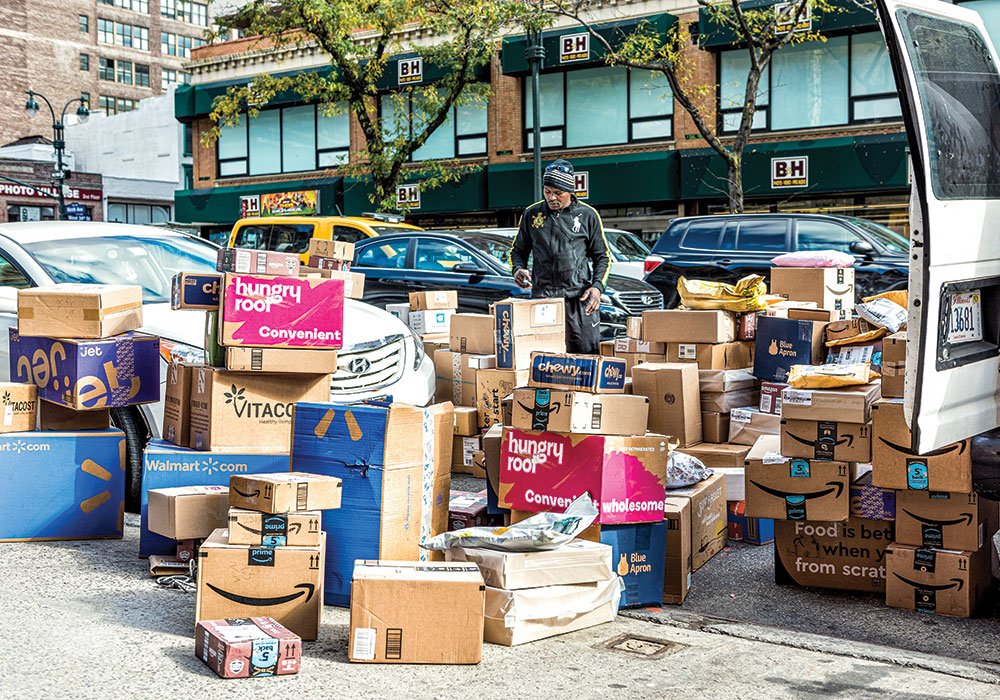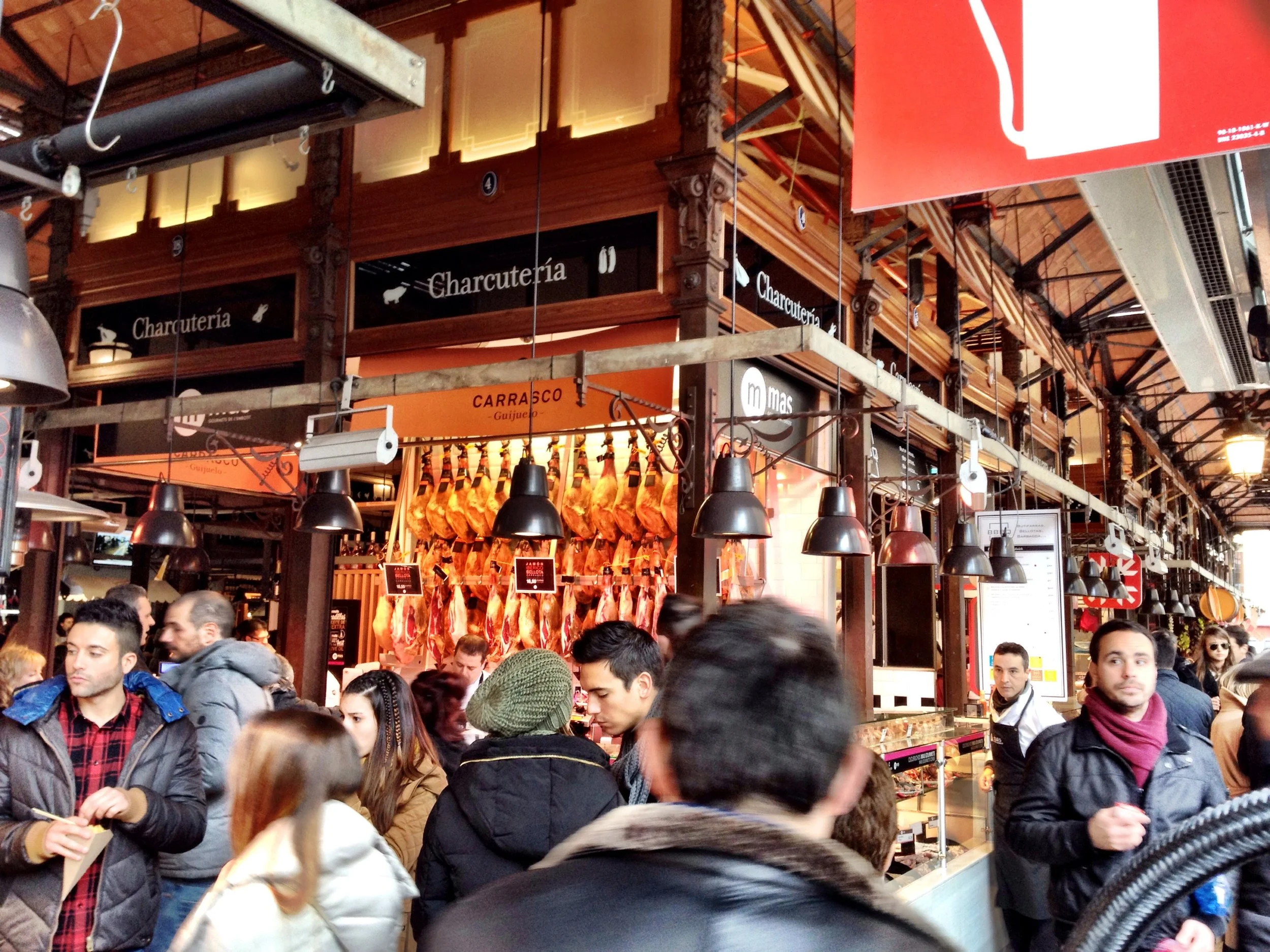The domination of Amazon has the potential to transform the spatial structure of cities; therefore, the global transition from the traditional “brick-and-mortar” business model to the Internet era “click-and-mortar” business model poses great threats to local marketplaces as well as some of the world’s biggest retailers. While cumulative effects of e-commerce remain unknown, developing proactive planning initiatives to address possible benefits and concerns is advised when planning for a future sustainable transportation system.
This memo-style essay assesses the seasonal closure of Main Street in downtown Ann Arbor, MI through the lens of Jane Jacobs’ criteria for a vibrant urban space. Public feedback and photos were collected to aid in the analysis in the viability of formalizing and making permanent the pedestrian-only area. The main strengths of the temporarily closed streets are increased foot traffic and diversity of uses which contribute to safety and a great place to raise a family. However, while the area is heavily utilized in the summer and fall, its hasty and temporary designation means that the area is not accessible to all. Inaccessibility and lack of residential space are the main weaknesses of the current plaza and should be addressed if it is turned into a permanent installation.
The domination of Amazon has the potential to transform the spatial structure of cities; therefore, the global transition from the traditional “brick-and-mortar” business model to the Internet era “click-and-mortar” business model poses great threats to local marketplaces as well as some of the world’s biggest retailers. While cumulative effects of e-commerce remain unknown, developing proactive planning initiatives to address possible benefits and concerns is advised when planning for a future sustainable transportation system.
Inspired by the bottom-up participatory case studies described in “Games in Architecture and Urban Planning,” we designed the “E-Recycle” game to promote the public engagement of residents in Huron Tower. With the assistance of the “E-Recycle” platform, residents not only built a closer relationship with the leasing office and other community members, but also learned related knowledge to solve recycling issues more effectively.
In Kampala, Uganda motorcycle-taxis - known locally as boda bodas - rule the streets. With the arrival of COVID-19, however, it’s been quite difficult to convince anyone that they won’t contract COVID-19 from a shared helmet, as they breathe on the same visor as the last passenger, compromising the safety of passengers using the service.
This short film by Nina Jackson Levin is a character study of two sisters, Annette and Earlene, long-time residents who illustrate the broader story of the present-day negotiation between resilience and resistance at stake within the City of Detroit. Responding to the 2020 Symposium prompt and reflecting on the film, Jackson Levin proposes that resilience and resistance are entangled phenomena and asks: resilience for whom?
"Now, here, you see, it takes all the running you can do, to keep in the same place. If you want to get somewhere else, you must run at least twice as fast as that!"
-- The Red Queen talking to Alice, Lewis Carol's Through the Looking Glass
Cities across the world are stepping up their efforts in building a more resilience society that can adapt to a dynamic and uncertain world. Yet as technology changes, new problems are inevitable. MURP student Peter Swinton shares his spring externship experience at the recently established Office of Resilience in Washington D.C. and provides thoughtful insight on the advent of the "smart city."
We, as urban planners, are shifting toward cities that offer more diverse means of transportation. Ideally, our cities should be walkable so that we may 1) reduce our carbon footprint; 2) assure that goods and services are accessible to our most vulnerable populations, and; 3) reduce our spending on expensive infrastructure that is eroded by heavy vehicular use. But what does an ideal walkable city look like? MURP student Colin Brown argues that Madrid, Spain is one candidate that is sometimes overlooked when compared to global cities like London or Paris, but shows firsthand how this city has many lessons to offer cities around the world.
Economic development too often becomes a large-scale balancing act. On the one hand, communities wish to invite wealthy investors, developers, and young professionals to bring the resources that they offer in order to improve quality of life and public services. On the other hand, such development can bring unintentional consequences that make the neighborhood unrecognizable and unaffordable for long-time residents. For some people, these consequences are quite intentional. Graduate student Brianne Brenneman focuses on the Over-the-Rhine neighborhood in Cincinnati, Ohio, emphasizing the consequences of unaffordable housing and what can be done to ensure people a decent quality of life.
Affordable and public housing has been an ongoing intergenerational battleground in the United States with no clear end in sight. While the road is still long and arduous, our current progress would not be possible were it not for early champions who defended the poor and most vulnerable. First-year planning student India Solomon offers a historical account of Catherine Bauer and Josephine Gomon, two incredible women who were ahead of their time in their fight for dignified public housing.
Many small towns throughout the United States were once characterized by bustling downtowns and exuberant social life during the 1950s. Unfortunately for many of these towns, those times have been replaced with job displacement and economic stagnancy. While many major cities in the U.S. have experienced various degrees of economic success in revitalizing their downtown corridors, small towns face unique challenges due to limited resources and assets, requiring considerable creativity and commitment from local planners and economic developers. Bradley Kotrba discusses the economic challenges facing his hometown area of Bay City... and what work has been done to address them.
Educational inequality continues to be a growing problem in the U.S. Poor-performing schools often result in community disinvestment, creating a vicious cycle of seemingly inescapable poverty. Establishing school-community partnerships may be one possible strategy toward changing this cycle. Karen Otzen, a second-year MURP student and Agora's Editor-in-Chief, discusses these school-community partnerships, the different partnership models currently used, and how they may simultaneously enhance both community development and educational opportunity.
Second-year Taubman urban planning student Julie Tschirhart offers a postmodern reading of Detroit, writing that the city has simultaneously become a symbol for society's yearning for the past and the urban crisis of the present, neither of which do justice to the people who make the city what it is.
Taubman graduate Kristin Baja, Climate and Resilience Planner for the City of Baltimore's Office of Sustainability, returned to her alma mater last week to offer advice on preparing cities for climate change while prioritizing their most vulnerable residents.
In Agora's second partnership with UNC-Chapel Hill's Angles planning journal, Libbie Weimer explores the controversy surrounding Silent Sam, a monument to a Confederate soldier on the Chapel Hill campus. Taking into consideration the university’s history, its values, and the relationship between its built environment and its social environment, Weimer advocates for the statue's relocation.
Agora staff editor William Doran offers a personal reflection on wildfires, and why they represent a daunting, meaningful challenge for planners of the 21st century.
Though not a silver bullet, inclusionary zoning is one tool cities can use to diversify neighborhoods, expand access to low-poverty municipalities for low-income residents, and ultimately increase access to higher-quality education for low-income students. Despite cost-based opposition on part of developers, inclusionary zoning is a sensible first step to facilitating economic integration and promoting more equitable access to quality municipal services in Michigan.
Washington, D.C. just instituted the first major revision to the city’s Zoning Regulations and Zoning Map since 1958. This article explores how the District's approach to zoning reflects its self-referential ideology, which is rooted in the concept of ideology itself.
Agora editor Rich Bunnell's love of urban planning initially took root as urban wanderlust, specifically a love of taking long, meandering walks through great American cities. The peak of this obsession came in late spring 2012, when he vowed to walk 100 miles in all five boroughs of New York City — and a little bit of New Jersey.
Ralph Ellison’s Invisible Man weaves a narrative through New York City’s urban spatial structure to map how race is physically built into the city’s neighborhood composition, street networks, and utilities. UNC-Chapel Hill urban planning graduate Danny Arnold highlights Ellison’s argument alongside “Monopolated Light & Power,” a paper sculpture he built to visualize the interplay of visible versus invisible; being versus non-being; and access to city life versus segregation.



















